Speaker
Description
Amorphous calcium carbonate (ACC) is an important metastable precursor for marine organism biomineralisation processes. However, the origin of the metastability of ACC is currently not well understood. Here, we use hybrid reverse Monte Carlo (HRMC) to generate atomistic models of ACC, driven by both experimental total scattering measurements [1] and interatomic potentials [2].
Using a recently-developed algorithm [3], we inverted the Ca—Ca pair correlation function from our HRMC model to obtain the effective Ca—Ca interaction potential. The form of this interaction resembles a Lennard-Jones—Gaussian (LJG) potential, characterised by two competing length scales [4]. This competition is known to frustrate crystallisation. The parameterisation of the LJG potential for ACC highlights the origin of geometric frustration in this system; namely, two distinct carbonate-bridging motifs.
Simulations driven by this effective Ca—Ca potential recover the two dominant characteristics of the ACC structure model: a heterogeneous structure, and a resilience to crystallisation. We therefore attribute both features to the geometric frustration encoded in the effective interactions between calcium ions.
References
[1] Michel, F. M., MacDonald, J., Feng, J., Phillips, B. L., Ehm, L., Tarabrella, C., Parise, J. B. & Reeder, R. J. (2008). Chem. Mater. 20, 4720—4728.
[2] Raiteri, P., Gale, J. D., Quigley, D. & Rodger, P. M. (2010). J. Phys. Chem. C 114, 5997—6010.
[3] Stones, A. E., Dullens, R. P. A. & Aarts, D. G. A. L. (2019). Phys. Rev. Lett. 123, 098002.
[4] Dshemuchadse, J., Damasceno, P. F., Phillips, C. L., Engel, M. & Glotzer, S. C. (2021). Proc. Natl. Acad. Sci. U.S.A. 118,

